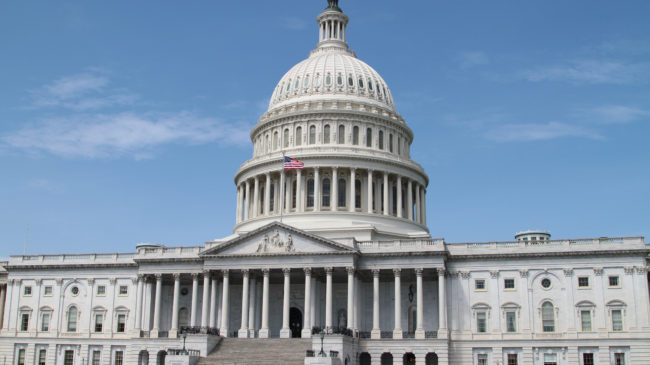Tomorrow, chief executives of the nation’s largest e-cigarette companies will be called before the House Committee on Energy and Commerce (E&C) to answer for the impact their products are having on public health.
In principle, such a hearing presents a valuable opportunity for e-cigarette company leaders to share the potential public health and harm reduction benefits of their products, as well as what they’re doing to prevent their use by minors.
Unfortunately, congressional hearings too often descend into grandstanding. The temptation to slam rapacious corporations for preying on America’s youth may be easier than acknowledging the tremendous public health benefits of switching smokers away from traditional cigarettes to safer e-cigarette alternatives.
Industry insiders and others hoping for a substantive, fact-based dialogue were disappointed when the committee’s original announcement of the hearing itself contained a factual inaccuracy, claiming the companies that will be present would represent 97 percent of the e-cigarette market. The companies being called to testify include Juul Labs; Reynolds American; NJOY; Fontem U.S.; and Logic Technology, which certainly make up a large segment of the market. But the 97 percent figure is a gross overestimate, derived from Nielsen survey data, which mostly measures major convenience store sales, missing thousands of independent vape shops and other kinds of vaping retailers. None of the companies called to testify sell ‘open-system’ e-cigarette products, which remain popular with many consumers. Instead, these companies represent only one part of the e-cigarette market and, not surprisingly, the part of the market that has the deepest pockets and is most able to comply with federal regulation.
E-cigarettes and the entire concept of reduced-risk tobacco products is one of the most contentious aspects of public health right now. Advocates for safer alternatives to cigarettes argue e-cigarettes could save millions of lives and make progress where previous tobacco control strategies have failed.
Critics claim that while these products may present some benefit to adult smokers, they pose a new threat to youth, offering a gateway to nicotine addiction
While youth vaping has risen since 2016, the data continue to show e-cigarettes remain a massive net benefit to public health. E-cigarettes have been conclusively proven to be safer than combustible cigarettes and millions of Americans have already switched from smoking cigarettes to vaping. If every adult smoker in America switched to vaping, it would be one of the greatest public health advances for 100 years.
And, thankfully, fears that youth vaping could be a gateway to smoking have not been borne out, with the youth smoking falling to its lowest point in recorded history at 5.8 percent in 2019. The claims of a youth vaping ‘epidemic’ are also wildly inflated. Examining the youth vaping data for 2018, a study by researchers at NYU School of Global Public Health found 86.2 percent of teens had not vaped in the past 30 days, and only 3.6 percent vaped on 20 days or more. According to one of the study’s authors, David Abrams of New York University’s College of Global Public Health, the infrequent vaping patterns among youth, suggest “curiosity and experimentation.”
Abram’s conclusion is backed up by data from the Centers for Disease Control and Prevention (CDC), which shows that ‘curiosity’ was the number one reason why young people say they tried vaping, with fruity and sweet flavors being available coming in a distant third-place on reasons to try vaping.
While Wednesday‘s hearing should make for some contentious theatre, it’s principal purpose may serve to act as a stage for the E&C committee chairman, Rep. Frank Pallone (D-NJ), to advocate for his proposed bill, the Reversing the Youth Tobacco Epidemic Act, which would, among other things, ban the sale of all flavored tobacco products.
It’s hard to overstate the scale and impact Pallone’s bill would have. It would ban the sale of menthol cigarettes, flavored cigars, smokeless tobacco, and e-cigarettes. Should it pass, it could represent the most significant prohibition since the Volstead Act.
All of that is troubling and there are cases to make against nearly everything in it. But what’s particularly troubling is that the bill ignores the health benefits of vaping and flavors. More than 80 percent of the e-cigarette market is comprised of flavored products. E-cigarette flavors are by far the most popular choice among adult vapers and have been shown to help people trying to switch away from traditional cigarettes.
The irony is that the executives set to be grilled on Wednesday would not be the ones who most lose out from Pallone’s bill since most of their products are already banned by the Food and Drug Administration. Instead, the bill would devastate the independent, start-up part of the e-cigarette market that has no relationship with Big Tobacco companies.
More than 10,000 businesses and around 100,000 jobs could be lost by implementing Rep. Pallone’s bill. Smokers would lose access to e-cigarettes, the most effective harm reduction tool and popular alternative to cigarettes ever invented.
Hopefully, members of Congress and the industry officials will spend some time during the hearing examining the public health benefits e-cigarettes offer as a tool to help reduce the number of smokers in America.

